The bane of many parents’ existence is digital gaming, which seduces and captivates children when they should be working on their homework instead. The online games market alone is expect to reach $275 billion by 2026 according to EMR. But market researchers are forecasting an even bigger market for online learning, based partly on the growth of the “metaverse.” The Brookings Institution released a report in February, 2022 titled “A whole new world: Education meets the metaverse,” and declared, “The metaverse is upon us.” But it remains to be seen whether the metaverse actually catches on, or whether the future of education integrates virtual environments and virtual classrooms in a widespread manner.
What is the metaverse?
The metaverse refers to any digital, immersive environment where multiple users interact with avatars. Today’s discussion of the metaverse usually refers to a 3D environment of virtual scenarios, featuring rooms, houses, communities, outdoor areas, and other spaces in a sandbox gaming environment where users are free to invent their own paths and social interactions.
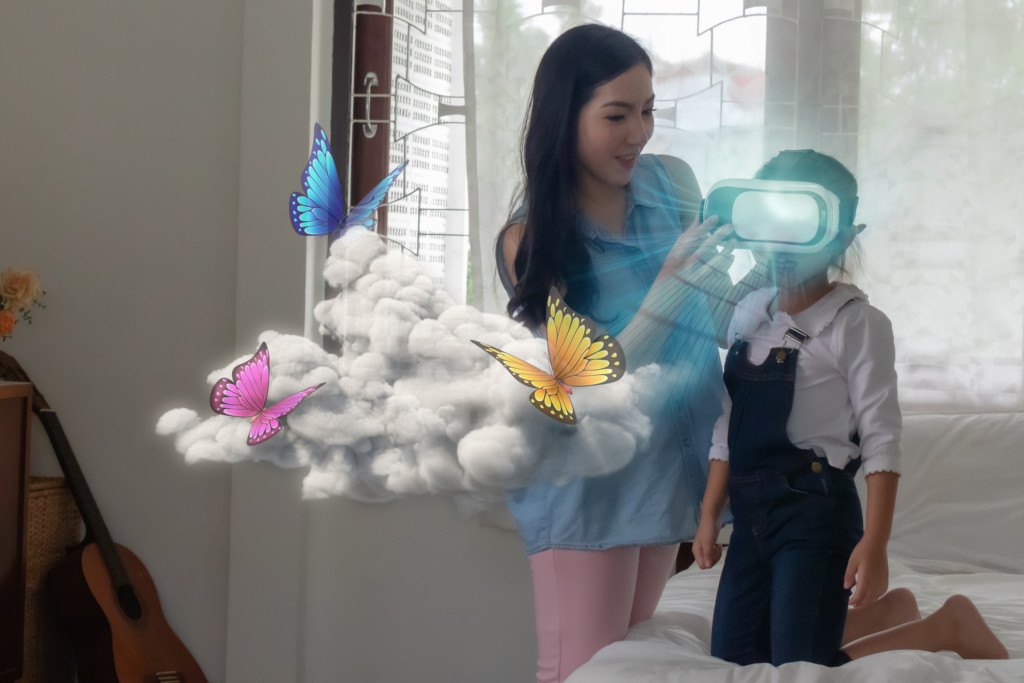
Much of the hype today surrounding the metaverse involves augmented reality (AR) or virtual reality (VR) and the use of 3D goggles or headsets to help wearers feel immersed in their virtual space. But this “hype” has been around a long, long time. At least 40 years to be specific. Early virtual reality companies began publicly demonstrating VR applications in the 1980s with great fanfare. Technologist Jaron Lanier founded VPL in 1985, becoming the first company to sell VR headsets and touch-sensitive gloves. Yet after over 35 years, VR headsets are still expensive and usually only found in the bedrooms of affluent gamers. After being around for just 2 years, the maker of the Oculus Rift virtual reality headset was sold to Facebook for $2 billion, so Facebook clearly believes in the metaverse. Facebook is so excited about the whole idea that it changed its name to Meta in 2021.
How could the metaverse affect education?
The promise of the metaverse for education is that it will improve education by making learning more immersive, detailed, social, and impartial. But turning a modern classroom into a virtual world is a challenge. That’s a pretty tall order, and right now what we mostly have are technology demonstrations. The hope is that the metaverse won’t simply convert real life into a virtual environment, but it will actually improve things.

For example, Meta produced several videos towards the end of 2021 when it changed its name from Facebook, and shared them with stockholders to help explain the direction the company was headed. In these videos, Meta showed how digital technology could be used to create online classes that augmented reality with layers of data and animated images. In one example, a young woman dons special VR glasses, which superimposes an interactive, 3D map of the solar system across the sky in front of her. The technology to do this exists already, but it may take a few more years before VR glasses and a full curriculum are proven. Meta intends to create its own VR glasses, as do many other companies. Once tested curriculums exist, will teachers still be able to integrate best practices and individualized learning, such as Let’s Go Learn’s diagnostic assessments and real-time progress monitoring?
It’s unclear whether the metaverse will be primarily adopted by higher education, or whether it can also be scaled to work in K-12 education. Immersive online learning experiences require some key pieces of technology, including VR glasses or headsets, high-powered computers, and broadband internet, to name a few of the big ones. Some families and school districts may find these costs are a significant barrier, although if the benefits of virtual worlds materialize in meaningful, measured ways, presumably school districts will prioritize the budgets.
If virtual worlds platforms deliver on the promise of avatars in the metaverse, equity could be a big winner. Consider every child you know who has some sort of physical or social challenge. By giving students digital environments which mask these challenges, the metaverse could bring more children together and make more education accessible to everyone. Students who create 3D avatars with digitized likenesses could modify their physical attributes to suit their wishes. Or students could choose fabricated avatars which don’t look anything like themselves. Students in wheelchairs could have fully functional legs in the multiverse. What kind of social effects will this have? Physics teachers could use a realistic avatar of Albert Einstein to teach courses (actually, this has already been done. See: https://einstein.digitalhumans.com/).
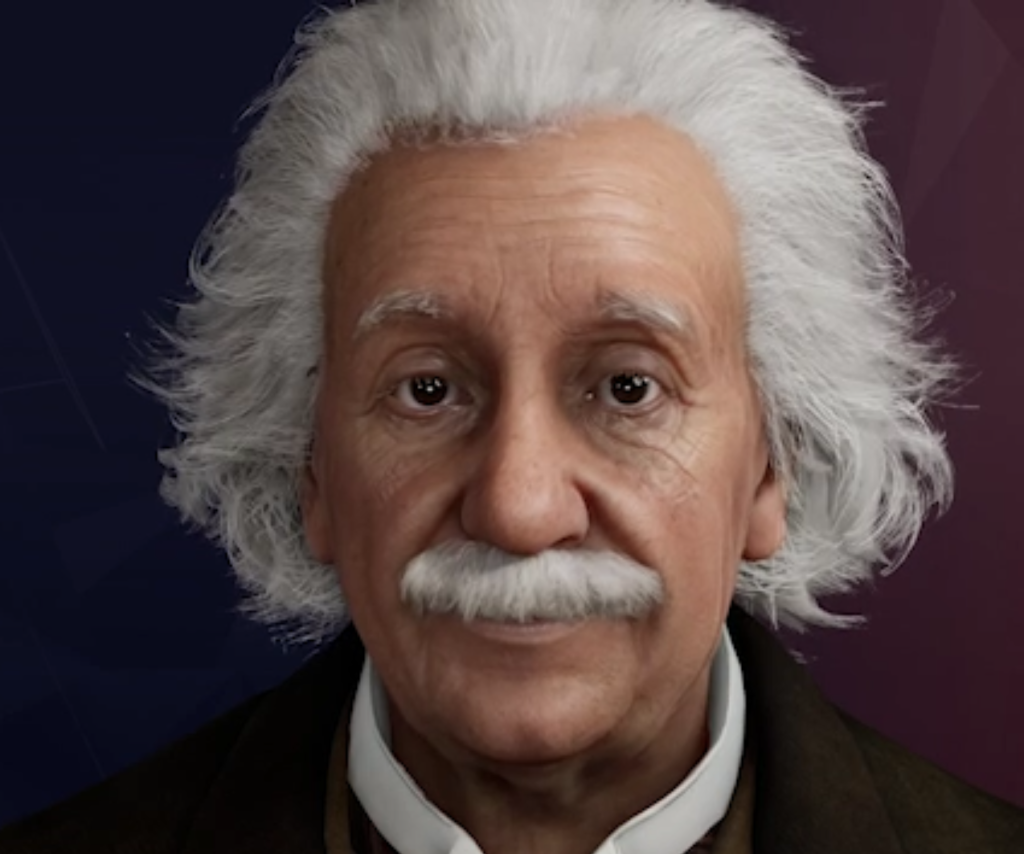
The digital Einstein avatar created by Uneeq at https://einstein.digitalhumans.com/.
Obviously there are big developmental and ethical questions surrounding this whole idea, and hopefully somebody is thinking about them now because you can already create the avatar of your dreams, and they are looking better and better with each upgrade. As the Brookings Institution pointed out recently, “Today, as the metaverse infrastructure is still under construction, researchers, educators, policymakers, and digital designers have a chance to lead the way rather than get caught in the undertow.” Brookings, and many others, hope to lay some groundwork and best educational practices in the hands of metaverse developers, in hopes they build wisely.
Before teaching in the metaverse...
Accessing the Metaverse
Prior to the COVID-19 pandemic, online education was growing steadily every year. But the pandemic greatly accelerated the growth of digital content, and the broadband internet necessary for most applications today. In 2021, the US Congress passed the Infrastructure Investment and Jobs Act, which provided $65 billion to help states address high-speed internet access and adoption. And that was on top of billions provided for essentially the same thing under the COVID-19 pandemic relief packages, like the American Rescue Plan Act (ARPA). ARPA provided 2 funds which could be used to build broadband communications, the Coronavirus Capital Projects Fund and the Coronavirus State and Local Fiscal Recovery Fund. The Capital Projects Fund included over $10 billion for broadband infrastructure capable of delivering digital content , and the State and Local Fiscal Recovery Fund allowed states to draw upon a $350 billion fund that could be used for access to technology.
By 2020, over 14 million Americans still lacked access to broadband internet, according to the FCC, but it’s safe to say with all this infrastructure investment that access has continued to increase dramatically in 2021 and 2022. Progress on bringing this advanced technology to Americans wherever they might live has been improving by at least 20% each year recently. The number of rural Americans in areas served by at least 25/3 Mbps broadband service —the level of service required to deliver some digital content with sufficient real-time speeds— is well over 80%. The bad news? Even in areas where broadband internet is available, roughly 100 million Americans still do not subscribe to services. That’s almost a third of the US population.
Teaching in the Metaverse
So what will virtual classrooms or augmented reality for education look like in the near future? Currently, digital games and social media platforms comprise the vast majority of the metaverse. Virtual reality curriculum is very much in its infancy, or relegated to technology demonstrations, as Facebook created when it launched its new name, Meta, in November, 2021.
Finding or creating proven virtual curriculum will be a huge challenge alone for schools, and as noted earlier, virtual experiences require expensive technology for every student in the class. Accessibility and equity will not be trivial challenges.
In 2021, Meta demonstrated the latest technology in digital smart glasses: the Ray-ban Stories. These glasses are designed to look fashionable using the classic Wayfarer style Ray-ban is famous for, while integrating the latest technology and privacy improvements. Because the glasses include a camera, to address privacy concerns they also have a light indicator which turns on whenever the camera is on. The cost starts around $300. These glasses are a huge improvement over previous attempts at VR/AR glasses not only in their onboard technology, but because they are fashionable to wear.
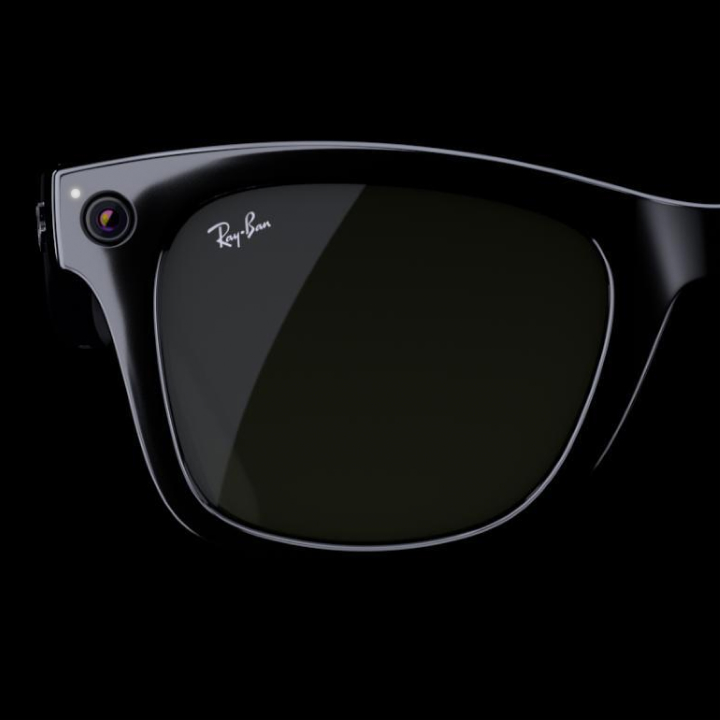
The former Facebook also purchased Oculus, the largest maker of consumer VR headsets, in 2014, and rebranded it Reality Labs. This partnership released the Oculus Rift and Quest VR headsets. VR headsets became available in the early 1990s from gaming companies like Sony, but the Oculus headsets helped popularize the technology to become more mainstream with gamers. While clumsy to wear compared to smart glasses, VR headsets provide an immersive experience with better miniature video screens and the ability to block out environmental light. Unfortunately, this immersive experience can cause motion sickness or dizziness for some users, although children and young adults are usually less sensitive to headset motion sickness than adults. Researchers at the University of Minnesota and elsewhere have reported high rates of motion sickness with VR headsets, up to 70% of users after only 15 minutes of use. If VR headsets are utilized for virtual classroom education in which students wear the devices for extended periods of time, motion sickness may prove too prevalent for practical use.
Despite the current lack of curriculum, many tech companies are working on virtual education experiences for students, including Microsoft and Meta. A wide variety of startups have emerged as well, and one of the biggest is Decentraland, a massive, 3D world overseen by the nonprofit Decentraland Foundation where users can buy virtual plots of land and interact with legions of other digital avatars. Decentraland uses cryptocurrency for transactions, making the purchases secure using the Ethereum blockchain. Other popular, growing, digital worlds in the metaverse include The Sandbox, Axie Infinity, Enjin, and WEMIX. Finding proven educational curriculum in these online worlds is still challenging.
Some tool makers are achieving modest success already, especially Roblox. The company currently provides a game-making platform which is used by gamers as well as teachers to demonstrate principles of computer programming. And Roblox appears to understand the huge need for proven curriculum. They have already announced a program to spend $10 million to support development of immersive virtual STEM curriculum for its metaverse platform.
Meta is similarly spending money to incentivize developers to create educational content. Their Spark AR curriculum is available on Coursera and edX to help developers access the tools needed to build content. But even Meta knows they have their work cut out for them in building content. Marne Levine, Meta’s chief business officer, noted at their late 2021 name-change press event, “In order to get there, we’re going to need to help build the skillsets of the people who build these experiences.” She also promises that “learning won’t feel anything like the way we’ve learned before.” Meta has set the bar very high.
One ground-breaking school has already gone all-in on the metaverse for education. The Optima Classical Academy (https://www.optimaclassical.org) hopes to open in 2022 as a 100% virtual charter school. The school will be available tuition-free to Florida students in grades 3-8, but will accept students from anywhere. They plan to have virtual classrooms with a wide variety of themes, from underwater classrooms to Greek temples. Children will work from their own homes or other suitable locations, and use VR headsets like the Oculus to participate. Their goal is to combine the latest virtual technologies with a “classical tradition and sequence of education.”
The Future of Education
The promise of the metaverse is that it will not only be fun, but also provide practical uses such as education. With most technical challenges solved, the metaverse awaits good developers, subject matter experts, and quality content.
The data on the effectiveness of the metaverse in education is still mixed. PwC (aka PricewaterhouseCoopers) reported in 2021 that VR headset users were over twice as “confident to act on what they learned after training” compared to conventionally trained adults. But the Wisconsin Institute for Discovery at University of Wisconsin-Madison found that high school students had no different academic outcomes when using sample curriclum in the metaverse compared to today’s computer-based e-learning, like Let’s Go Learn’s Edge products. If that trend persists, then why spend all the money and effort to bring the metaverse to education? The Wisconsin researchers did find one positive metric regarding VR: students felt it was easier and more fun to use. But that may simply mean the metaverse is the latest shiny toy for students to play with.
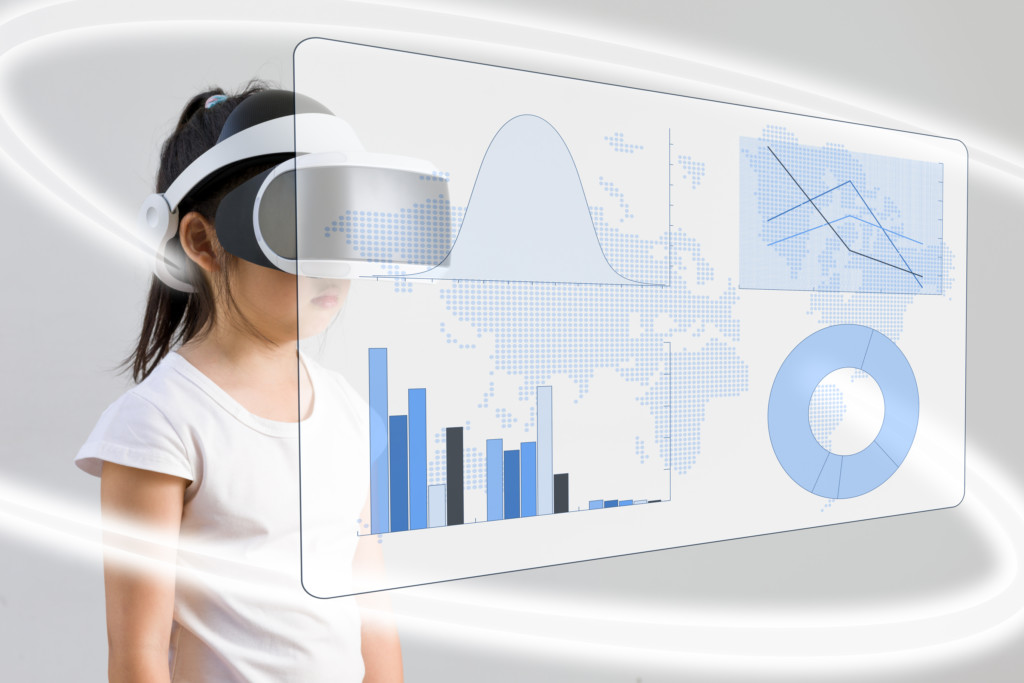
So stay tuned. It remains to be seen if the metaverse can live up to its hype. It already appears to be a viable gaming platform, but whether it can replace game consoles, or make the leap to reliable educational tool, is anybody’s guess.
References
- Bell, Karissa. “I Wish Ray-Ban’s Stories Smart Glasses Were Made by Anyone but Facebook.” Engadget, 9 Sept. 2021, https://www.engadget.com/facebook-ray-ban-stories-hands-on-160048150.html.
- FCC Annual Broadband Deployment Report Shows Digital Divide Is Rapidly Closing. U.S. Government, 19 Jan. 2021, https://docs.fcc.gov/public/attachments/DOC-369393A1.pdf.
- Global Digital Games Market Report and forecast 2022-2027. Digital Games Market Size, Share, Price, Growth, Forecast 2022-2027. (n.d.). Retrieved February 26, 2022, from https://www.expertmarketresearch.com/reports/digital-games-market.
- Herold, Benjamin. “Teaching in the ‘Metaverse’? Roblox Looks to Make It a Reality.” Education Week, Education Week, 1 Dec. 2021, https://www.edweek.org/teaching-learning/teaching-in-the-metaverse-roblox-looks-to-make-it-a-reality/2021/11.
- Kim, Meeri. Inside Science, ABC News Network, 2019, https://abcnews.go.com/Technology/feel-motion-sickness-virtual-reality/story?id=65153805.
- New York University Staff. “Researchers Use Virtual Reality to Demonstrate Effectiveness of 3D Visualization as a Learning Tool.” Phys.org, 2 Aug. 2021, https://phys.org/news/2021-08-virtual-reality-effectiveness-3d-visualization.html.
- Ní Chúláin, Aisling. “Educating in the Metaverse: Are Virtual Reality Classrooms …” Euronews.next, 14 Jan. 2022, https://www.euronews.com/next/2022/01/14/educating-in-the-metaverse-are-virtual-reality-classrooms-the-future-of-education.
- Owen, Julian, and Staff. “Will the Metaverse Send Education into a New Dimension?” Education Technology, 26 Jan. 2022, https://edtechnology.co.uk/features/metaverse/.
- PricewaterhouseCoopers. “How Virtual Reality Is Redefining Soft Skills Training.” PwC, https://www.pwc.com/us/en/tech-effect/emerging-tech/virtual-reality-study.html.
- ReportLinker. “Global e-Learning Market to Reach $457.8 Billion by 2026.” GlobeNewswire News Room, ReportLinker, 13 July 2021, https://www.globenewswire.com/news-release/2021/07/13/2262081/0/en/Global-E-Learning-Market-to-Reach-457-8-Billion-by-2026.html.
- Ribeiro, Raquel. “’Metaverse’ and the Educational Potential: World of Better Learning.” World of Better Learning | Cambridge University Press, 16 Nov. 2021, https://www.cambridge.org/elt/blog/2021/11/15/metaverse-educational-potential/.
- Hirsh-Pasek, Kathy, et al. “A Whole New World: Education Meets the Metaverse.” Brookings Institution, 14 Feb. 2022, https://www.brookings.edu/research/a-whole-new-world-education-meets-the-metaverse/.
- Uneeq Digital Einstein. Retrieved February 26, 2022. https://einstein.digitalhumans.com/.


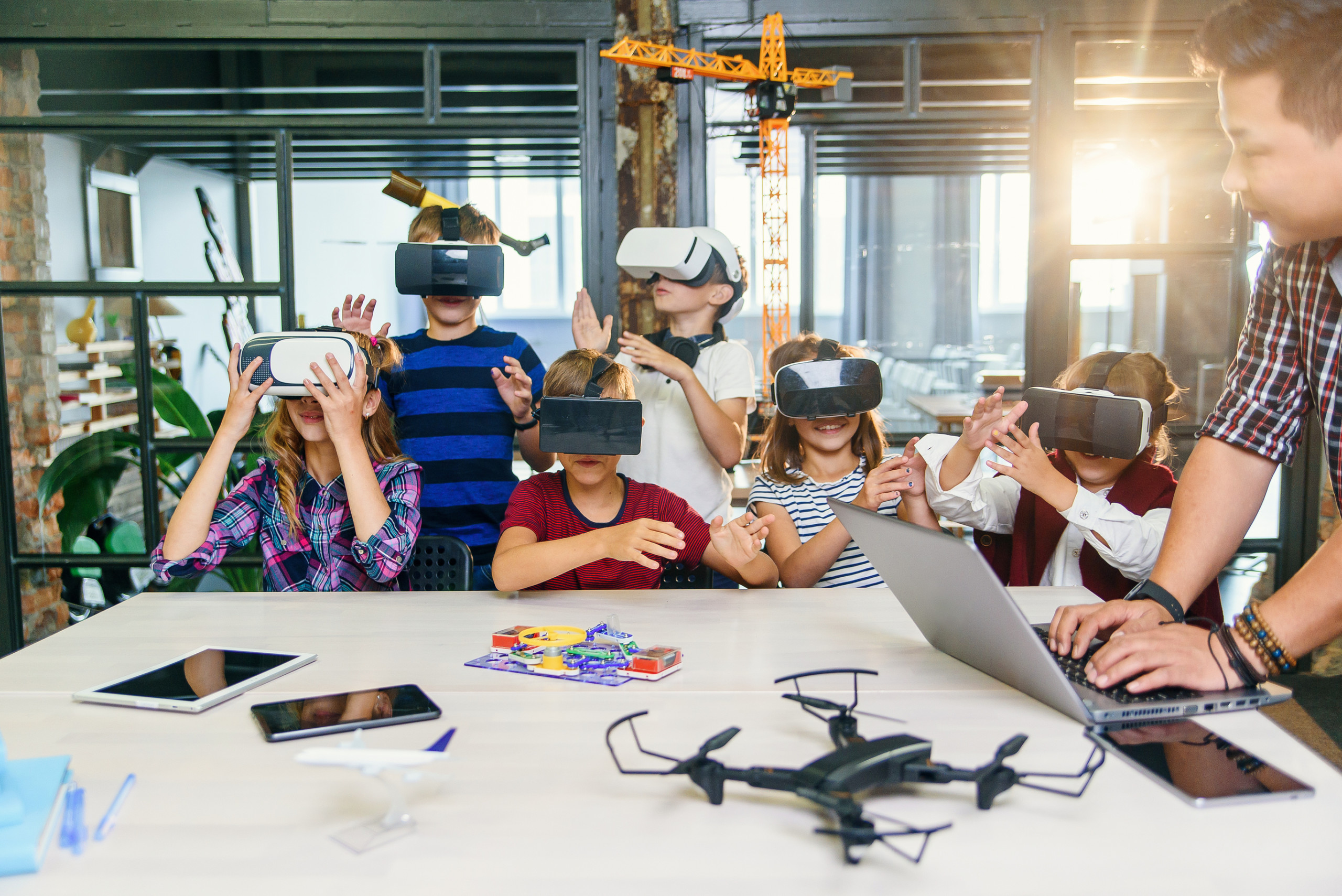
Leave A Comment